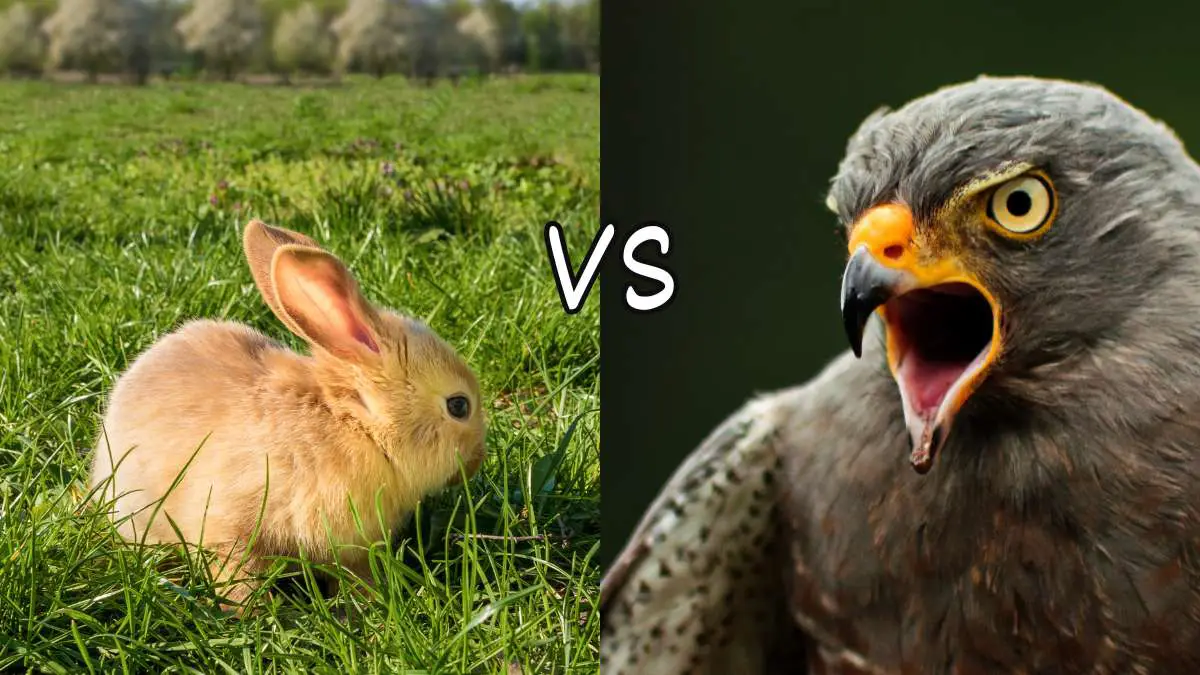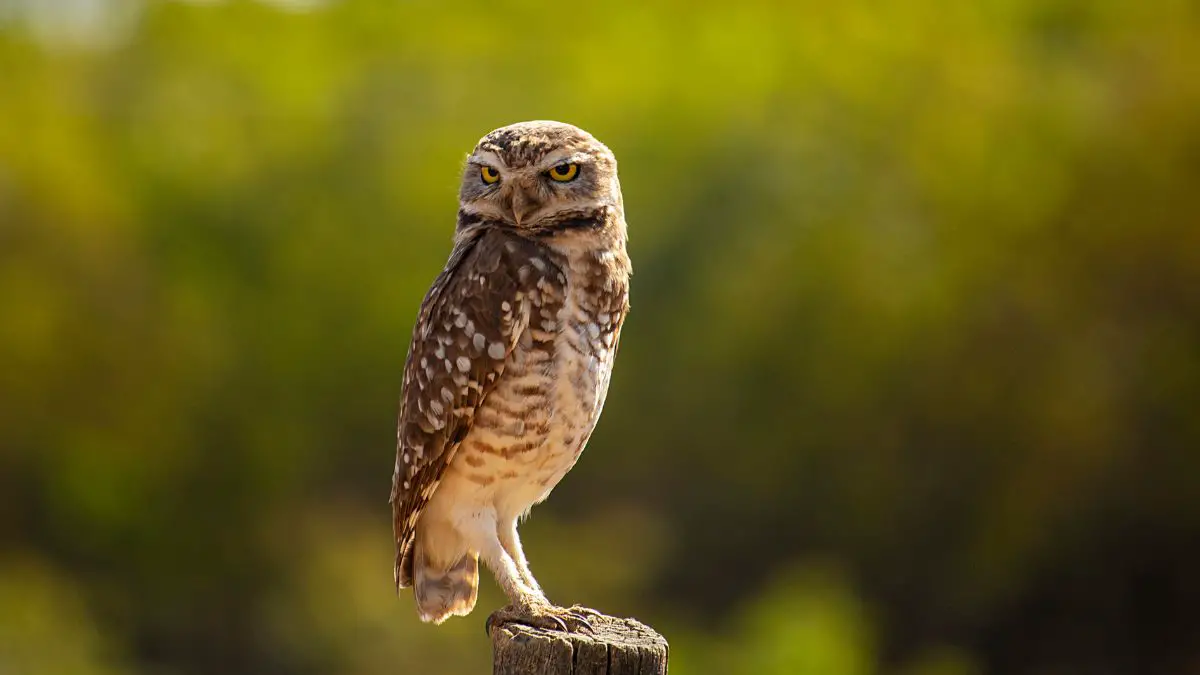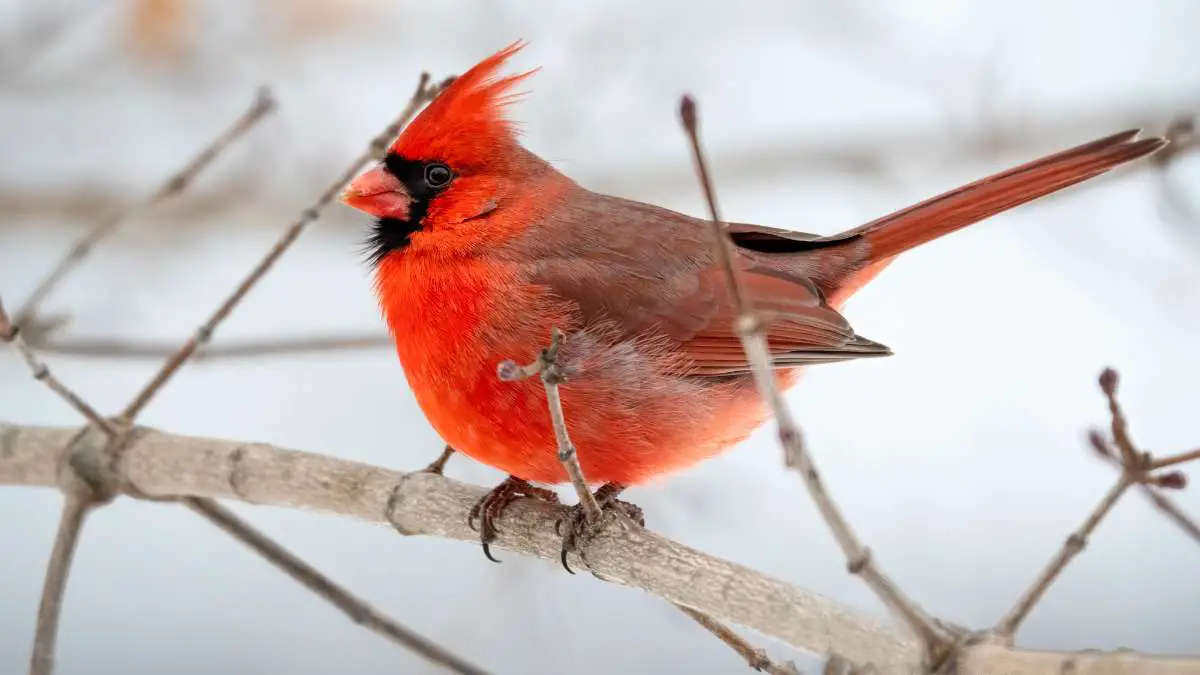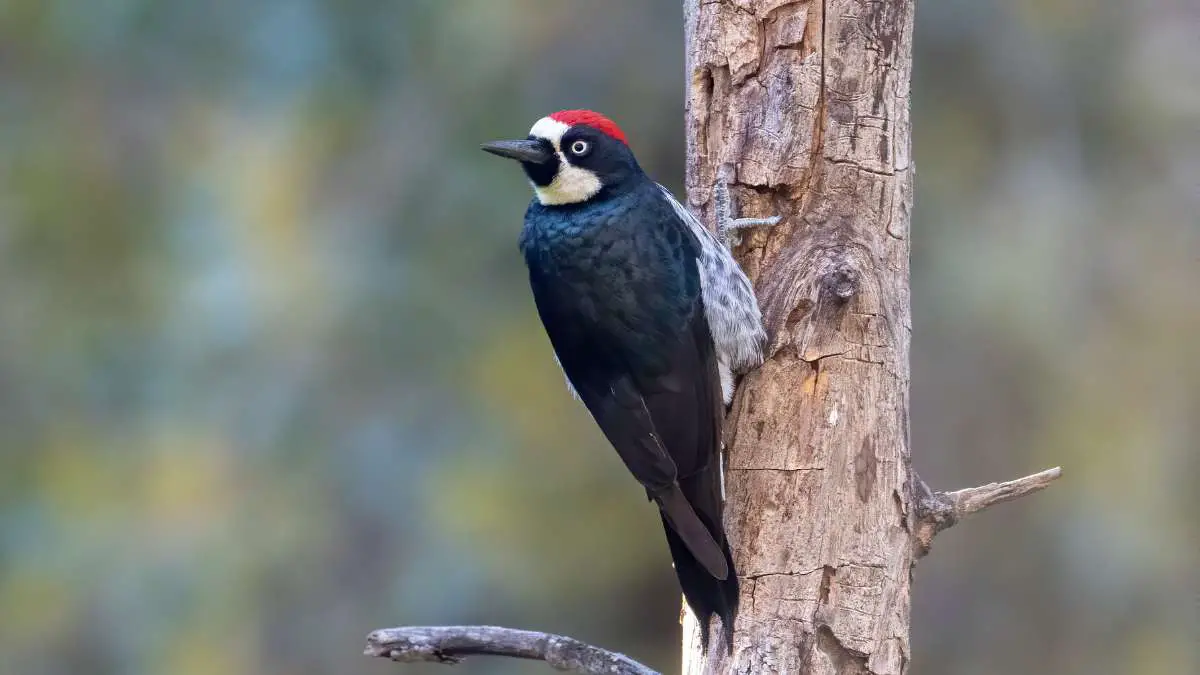In the wild, hawks are skilled hunters, but what exactly do they eat? Do they eat rabbits? Yes, hawks do eat rabbits.
Hawks are birds of prey known for hunting various animals, and rabbits are a common part of their diet. Hawks have sharp eyesight and strong talons, which they use to catch and consume rabbits.
These birds play a vital role in balancing the ecosystem by controlling rabbit populations in many regions.
So, in short, hawks and rabbits are part of a natural predator-prey relationship in the wild.
Understanding the Hawk’s Predatory Nature
To grasp hawk’s dietary habits better, let’s look into the world of hawks and discover the different types of hawks and their unique characteristics.
Types of Hawks and Their Characteristics
Hawks come in various shapes and sizes, each adapted to its specific hunting style and habitat. The Red-Tailed Hawk (Buteo jamaicensis), for instance, is a common sight across North America.
Recognizable by its brick-red tail feathers, this raptor possesses keen vision and strong talons, making it a formidable rabbit hunter.
Cooper’s Hawks (Accipiter cooperii), on the other hand, are known for their agility in dense woodlands. With bluish-gray plumage and striking orange eyes, they’re well-suited for pursuing birds, but they won’t pass up a rabbit if the opportunity arises.
In contrast, the Northern Harrier (Circus hudsonius) boasts a more distinctive approach. With a low, gliding flight pattern and a preference for open fields, this hawk relies on auditory senses to locate its prey.
Although birds make up a significant portion of their diet, rabbits are certainly not off their menu.
These variations in hawk species and characteristics highlight the adaptability of these birds in the wild.
From the dense forests to open plains, hawks have evolved to thrive in diverse environments, utilizing their predatory instincts to hunt and feed, which often includes rabbits as a substantial part of their diet.
Understanding these nuances helps us appreciate the intricate role hawks play in the ecosystems they inhabit, where they balance the delicate interplay between predator and prey.
The Rabbit’s Role in the Hawk’s Diet

Why Rabbits are a Common Prey
One of the key reasons behind this prevalence is the abundance of rabbits in many ecosystems. These small mammals reproduce rapidly and often have large populations.
This means that they are a consistently available food source for hawks throughout the year. Hawks are opportunistic hunters, and when they spot a rabbit, they swoop down with their sharp talons and strong beaks, making a meal out of these nimble creatures.
Another factor that makes rabbits a preferred choice for hawks is their nutritional value.
Rabbits are rich in protein and provide essential nutrients that help hawks maintain their strength and energy levels. This protein-packed diet is crucial for these birds, especially during the nesting season when they need extra energy to care for their young.
Seasonal Variations in Rabbit Predation
While hawks do consume rabbits year-round, there are seasonal variations in their predation patterns.
In the spring and summer months, when rabbit populations typically boom due to favorable breeding conditions, hawks may focus more on these mammals as their primary food source.
During winter, when rabbits may be scarcer and harder to find under layers of snow, hawks might diversify their diet by hunting other prey like birds or rodents.
Understanding the pivotal role that rabbits play in the hawk’s diet sheds light on the fine balance of nature.
It’s a testament to the adaptability of both predator and prey in the wild, where hawks have honed their hunting skills to take advantage of the availability and nutritional benefits of these furry, swift-footed creatures.
Hawk Hunting Techniques
When it comes to hunting, hawks employ a variety of impressive techniques that showcase their adaptability and prowess as predators.
Aerial Hunting Strategies
Hawks are renowned for their aerial acrobatics and keen eyesight. They often soar high above, scanning the ground below for potential prey.
Once they spot a target, whether it’s a rabbit or another small animal, they fold their wings and plummet with astonishing speed, using gravity to their advantage. At the last moment, they extend their sharp talons, aiming to grasp their prey firmly.
These aerial attacks can be lightning-fast, making it challenging for the prey to escape. Hawks are precision hunters, and their ability to lock onto a target from high above is a testament to their remarkable hunting skills.
Ambush Tactics on Ground
While aerial hunting is their signature move, hawks also employ ambush tactics when hunting on the ground. They might perch inconspicuously on a tree branch or a fence post, patiently waiting for an unsuspecting rabbit to come into their vicinity.
When the moment is right, they strike swiftly and silently, surprising their prey. Their powerful talons and sharp beaks ensure a quick and efficient kill.
Hawks are not just skilled hunters; they are strategic ones too. They choose their hunting techniques based on the terrain, the behavior of their prey, and the element of surprise.
This adaptability is what makes them such successful predators, able to thrive in a variety of habitats.
Adaptations of Hawks for hunt rabbits
Hawk Eyesight Explained
Hawks are renowned for their exceptional eyesight. Their eyes are specialized for hunting, with a high number of light-sensitive cells called cones, allowing them to perceive a wide range of colors and details.
This acute vision enables them to spot prey from great heights. Imagine having binoculars for eyes – that’s how sharp their vision is!
How Hawks Spot Their Prey
From their lofty vantage points, hawks scan the landscape for movement. They can spot the subtlest twitch of a rabbit’s ear or a quick dash across the ground.
This visual acuity gives them a significant advantage when hunting. Once they lock onto a potential meal, they launch themselves into a rapid descent, talons ready to strike.
Sharp talons to lock the prey
Each and every toe of a Hawk has sharp and down curved talons which gives no chance for a prey to escape once it is locked between those talons.
Those talons help to ensure the strong grip and holding ability where it can lift a weight equal level times heavier than its own weight.
The Rabbit’s Role in the Food Chain
Rabbits, being abundant in many ecosystems, play a vital role in the hawk’s diet and the broader food chain.
Rabbit’s Role in the Ecosystem
While they may be a favorite meal for hawks, they also serve as prey for other predators like foxes and coyotes. Their grazing habits can influence plant growth, which in turn impacts the ecosystem’s vegetation.
It’s a complex and delicate balance where each species, including hawks and rabbits, contributes to the overall health and functioning of their environment.
Hawk Species and Rabbit Predation
Different species of hawks exhibit unique characteristics that influence their hunting preferences, including their choice of prey.
Red-Tailed Hawks and Their Rabbit Diet
One of the most common hawk species in North America, the Red-Tailed Hawk, has a fondness for rabbits specially for Sylvilagus species.
With their broad wings and trademark rust-colored tails, these hawks are skilled hunters, often scanning fields and grasslands for rabbits to pounce upon.
Cooper’s Hawks as Rabbit Predators
Cooper’s Hawks, recognized by their bluish-gray plumage and striking orange eyes, are versatile hunters.
While they primarily target birds, they won’t pass up the opportunity to catch a rabbit if it presents itself. They navigate woodlands with agility, ensuring no potential meal goes unnoticed.
Northern Harriers and Their Unique Rabbit Hunting Style
Northern Harriers, known for their low, gliding flight patterns, have a distinct approach to hunting rabbits.
They rely on keen auditory senses to locate their prey in open fields. Their distinctive white rump patch is a key identifier, and they employ a stealthy, ground-hugging strategy to surprise rabbits and other small mammals.
Geographic Variation in Hawk-Rabbit Interactions
Interestingly, the interaction between hawks and rabbits can vary based on geographic regions, demonstrating how local ecosystems shape their prey preferences.
Regional Differences in Prey Preferences
In different parts of the world, hawks may exhibit varying dietary preferences influenced by factors such as habitat and available prey species.
For instance, in densely wooded areas, hawks may rely more on bird prey, while in open grasslands, rabbits become a more significant part of their diet.
Factors Influencing Hawk-Rabbit Predation
The complex relationship between hawks and rabbits is influenced by various factors.
Habitat and Environmental Factors
Hawks are adaptable creatures, but their hunting patterns are significantly shaped by their habitat.
How Habitat Affects Hawk Hunting
In densely wooded areas, hawks may encounter obstacles that limit their ability to hunt rabbits efficiently.
The presence of thick foliage can provide cover for rabbits, making it harder for hawks to spot and catch them.
Conversely, in open grasslands or fields, hawks have a more favorable hunting environment, as they can spot their prey from above and swoop down with precision.
Climate and Seasonal Impacts on Rabbit Availability
Seasonal changes and climate play a crucial role in rabbit availability, which in turn influences hawk predation.
During the breeding season, when rabbit populations surge, hawks often find an abundance of these small mammals to target. In contrast, harsh winters or adverse weather conditions can reduce rabbit populations, forcing hawks to adapt their diets and hunt other prey.
Competition with Other Predators
Hawks are not the only predators on the prowl, and competition for rabbit prey can be fierce.
Interactions with Owls and Other Raptor Species
Other raptor species may share the same hunting grounds as hawks, leading to competition for rabbits.
On the other hand Owls are not that competitive for Hawks because they hunt during the night. Therefore they have partitioned the resource utilization temporality.
Mammalian Predators vs. Hawks
Rabbits also face threats from terrestrial predators like foxes, coyotes, and bobcats. These mammals are relentless hunters and often compete with hawks for rabbit prey.
The balance between avian and mammalian predators can shift based on local ecosystems and population dynamics.
The Impact of Hawk Predation on Rabbit Populations
Balancing the Ecosystem
In nature, balance is key, and hawks play a crucial role in achieving it. By preying on rabbits, hawks help control their numbers.
Without this natural population control, rabbit populations could surge, leading to overgrazing of vegetation and potential harm to their own habitat.
Hawks act as nature’s check and balance system, ensuring that ecosystems remain healthy and harmonious.
Prey-Predator Dynamics
The interactions between hawks and rabbits showcases the classic predator-prey relationship. As hawk populations thrive due to a steady food source, rabbit populations can decrease.
This, in turn, puts less pressure on vegetation, benefiting other species that share the same habitat. It’s a complex web of interactions, but it’s what makes ecosystems resilient and sustainable.
Human Interventions and Rabbit Conservation
While hawks play a natural role in controlling rabbit populations, human interventions and conservation efforts also come into play.
Implications for Rabbit Conservation Efforts
Conservationists are keenly aware of the need to protect rabbit populations from excessive predation, whether it’s from hawks or other predators. Understanding the impact of hawk predation helps inform rabbit conservation strategies.
These efforts often include habitat preservation, the creation of safe zones for rabbits, and monitoring of predator populations to ensure a healthy balance.
But to cope with these matters we need to be very precise with the population dynamics of the both Hawks and Rabbits. That is why we need to emphasize the importance of the monitoring program.
Coexistence Strategies
Coexisting with nature’s predators is a challenge, but it’s essential for the preservation of species.
Coexistence strategies involve striking a balance between protecting vulnerable prey like rabbits while respecting the role of hawks in the ecosystem.
It’s a delicate ecological link, but when managed effectively, it can result in thriving ecosystems where both predator and prey have their place.
Conclusion
In the world of nature, the answer to “Do hawks eat rabbits?” is a resounding yes. These magnificent birds of prey are skilled hunters, with rabbits often on their menu.
Hawks, with their exceptional hunting techniques and adaptability, play a vital role in maintaining the balance of ecosystems. They serve as nature’s regulators, helping control rabbit populations and ensuring the health of their habitats.
Understanding this complicated relationship reminds us of the interconnectedness of all living things and the importance of coexistence in the delicate web of life.
You may also like:




